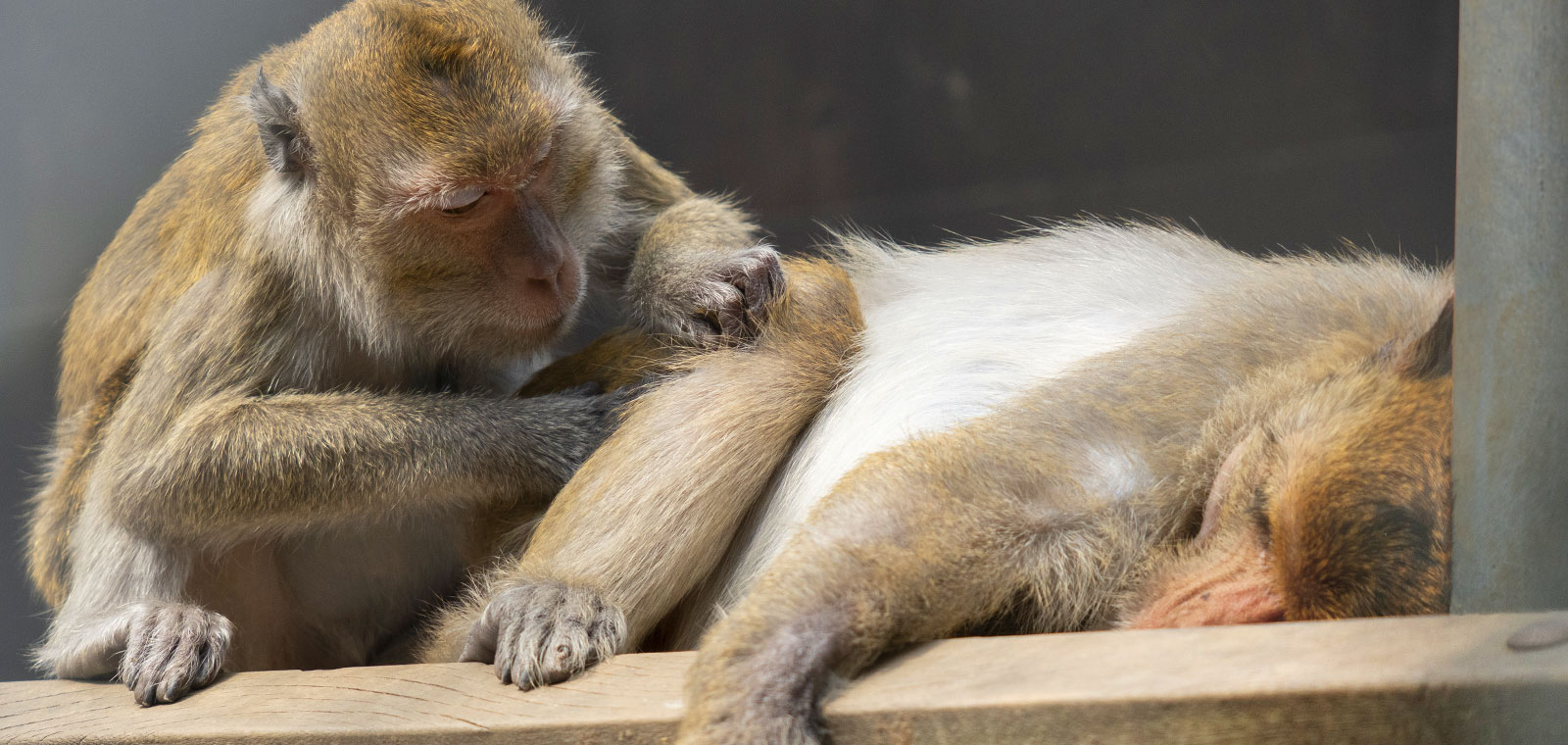
Study underlines strategic benefits behind bonding for both sexes
Female and male primates often form close bonds, but not purely out of affection. Close relationships usually evolve when there is a clear benefit for both parties, with protection and reproductive control playing key roles. A new study, led by primatologists Liesbeth Sterck from Utrecht University and BPRC, and Julia Ostner from the University of Göttingen, provides theoretical insights in how these bonds are formed. The study underlines the decisive role that females play.
Why do some female and male primates hit it off and form strong bonds, while others don’t? Science has long offered various theories to explain these connections, ranging from sheer physical attraction to deep-rooted evolutionary processes. While these ideas are compelling, most studies on primate bonding have traditionally focused on males as the key players, often overlooking the crucial role that females might play in these relationships.
Benefits for both
Mapping hundreds of primate observations from the past decades, an international team of primatologists suggests that these ‘friendships with benefits’ between male and female primates usually evolve when both can gain something. For females, it’s about choosing whom they mate with. For males, it’s about caring for and protecting their young.
These dynamics are especially important in groups where males cannot just dominate females and where offspring need looking after. These bonds are also most likely to form in groups where males aren’t the boss and where male care is crucial. The primatologists mapped hundreds of earlier observations of chimpanzees, lemurs, macaques, and other species.
Strategic bond
“Our findings show that these bonds aren’t just about attraction and affection”, says Liesbeth Sterck. “They are also strategic. Both male and female primates unconsciously seek out these friendships that provide benefits. The benefits can be protection, better access to resources, or securing the survival of their offspring. For evolution to shape these behaviours, it is not needed that they know when or how the bonds pay off.”
Changing bonds and breaking up
The study also shows that the nature of these bonds can change over time. Initially, males tend to groom females more often during the mating season, but this dynamic can shift. Females might look for male support to protect their infants during nursing. A male may bond with a female initially to secure mating rights, and after the female gives birth, she may rely on the male for protection. Once the offspring become independent, these bonds often dissolve, and both the male and female may move on to other partners.
However, in cases where females give males the opportunity to father multiple subsequent offspring, long-term bonds are more likely to form. These stable relationships are common in species like macaques, baboons and chimpanzees, where females repeatedly prefer the same male and males provide ongoing care. Such long-lasting bonds are often supported by mutual benefits, making continued investment worthwhile for both sides.
Human relationships
When it comes to human relationships, the dynamics might be more complex. Moreover, humans typically form exclusive pairs, while both female and male primates maintain a practice with multiple mating partners. But some of the same underlying principles from primate bonds apply, according to Sterck’s team.
“Just like our primate relatives, human bonds often involve a mix of affection and strategic partnership”, says Sterck. “While love and emotional connection are vital, unconsciously there's also an element of mutual benefit, whether it's support, protection, or shared resources.”
Love is the lubricant
Love and affection still play a crucial role in primate bonding, says Sterck, even if the evolutionary foundation of these relationships is built on long-term benefits. “While the drive to form strong bonds may stem from evolutionary advantages, emotions like love and affection kick-start these connections. These feelings act as the lubricant, smoothing the way for the actions and behaviors necessary to maintain and deepen these bonds over time.”
Future research
To further investigate how widespread their bonding theory can be in the animal kingdom, Sterck’s team calls for additional research. They specifically call for additional research in great apes (such as gorillas and bonobos) and so-called New World primates, including tamarins and capuchins – or even further to non-primate species living in permanent social groups, such as wolfs and lions. They also envision that this approach can shed new light on the evolution and dynamics of human pair bonding.
This study is published in Evolution and Human Behavior.

